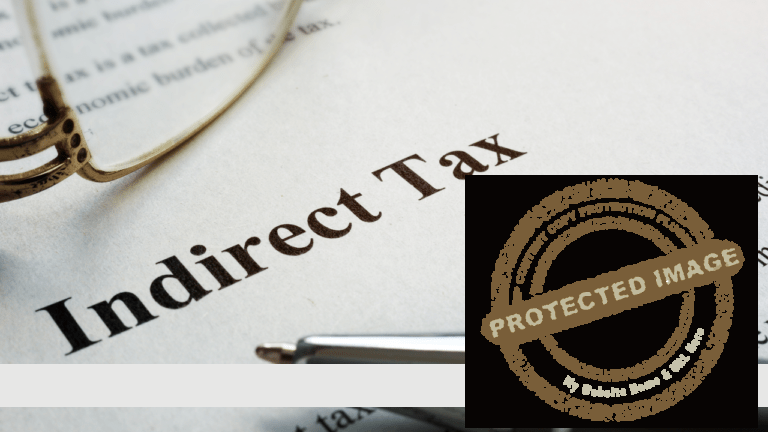Taxpayers in Kenya do not get VAT refunds when expected. In addition, the taxpayers do not receive the total amounts of VAT refunds, claimed.
This post addresses the proposed amendments/changes to section on VAT refunds in the VAT Act (2013).
When putting forward proposed solutions for a problem, it is important to understand the problem at hand in order to provide a workable solution. In the following sections, we will briefly explain what the issues are regarding VAT refund claims in Kenya so that whatever solutions are proposed may be workable.
Current problems
Currently, VAT refund claims have three problems:
- Refundable VAT amounts when a taxpayer has both zero-rated and non-zero-rated vatable supplies (16% and 8%).
- Time taken to refund the VAT claims.
- Two tax Acts dealing with issues of VAT refunds [VAT Act (2013) and the Tax Procedures Act (2015)].
Refundable VAT amounts
In the current VAT Act, VAT is only refundable input VAT is from three sources:
- VAT in bad debts.
- VAT paid in error.
- VAT on zero rated sales.
Normally, (a) and (b) do not have major issues.
However, (c) is the most contentious reason being there are many taxpayers who have a mix of both zero-rated and non-zero-rated vatable supplies (16% and 8%). Because of the limitation by the Act on what amounts of input VAT qualify to be refunded, it means that the input VAT that a taxpayer can be paid is only the proportion of zero-rated supplies to the total taxable supplies in that tax period irrespective of how long it takes to supply to the market the zero-rated supplies.
In total we propose four solutions to the current problem:
Proposal 1 – Full Refund
When operating VAT on a month by month basis, the issue of utilizing certain amounts of input VAT does not arise as long as it from it is used for eatable supplies. The full input VAT is utilized and hence claimable.
Example:
In the month of March 2019, XYZ had input VAT kshs 150,000 and output VAT kshs 80,000 while sales were 16% kshs 500,000 and 0% kshs 1,000,000. XYZ will be allowed to claim the full kshs 150,000 while doing it in the day-to-day VAT operations.
However, when it comes to claiming the same amount of VAT as a VAT refund, XYZ can only be paid the proportion of Kshs 150,000 x kshs 1,000,000/kshs 1,500,000 [kshs 1,000,000 + kshs 500,000].
According to the Taxpayer’s Charter and Principles of taxation, equity and fairness are prime. All taxpayers are supposed to be treated equally. Hence, a taxpayer should get same treatment of same input VAT whether claiming the input VAT in the month by month VAT operation or claiming it as input VAT refunds.
All input VAT are the same.
Hence, all VAT input for taxpayer’s with zero-rated supplies should be claimable and payable in total after establishing that the input VAT is genuine.
Proposal 2 – Introduce use a Formula
A new formula can be introduced similar to the exemption formula. In this case:
- If over ninety (90%) per cent input VAT is used for zero-rated supplies, one hundred (100%) percent is refundable.
- If less than ten (10%) per cent input VAT is used for zero-rated supplies, one hundred (100%) percent is not refundable.
- If between ten (10%) percent and ninety (90%) per cent input VAT is used for zero-rated supplies, refund the VAT claim proportionately.
However, in case the current allocation formula is retained, I have two proposals:
Proposal 3 – Refund all the VAT claims within the year and balance out at the end of the year
All the VAT amounts claimed can be refunded once established to be refundable within the year. However, at the end of the year, KRA and the taxpayer should revisit the issue and establish how much of the paid VAT refunds were due to the zero-rated supplies and how much was not. The taxpayer can be asked to pay back any VAT refunded that was due to non-zero-rated supplies (this happens elsewhere.). This will take care of the delays in supplying zero-rated supplies to the market.
Proposal 4 – Utilize unpaid VAT credits for tax obligations
In addition, in case the current position is retained, a taxpayer should be able to utilize the amounts of the unpaid VAT refund claims amount for other tax obligations. The utilization of the VAT credits should be for current tax debts and future tax obligations in such taxes as PAYE, corporate income tax, Excise duty etc.
It is important to note that the amount of VAT input from the refund claims that is not paid to the taxpayer using the current formula is payable only that the VAT Act prohibits payment of the same because all of it was not used for the zero-rated supplies according to the sales proportions in that tax period. The taxpayer is entitled to the VAT credits only that he/she cannot be paid cash which is either remitted to their bank account, utilized for current tax debts or credited for future tax obligations.
A taxpayer should be able to utilize the unpaid VAT refund claims in other tax liabilities and obligations if the amounts are established to be payable to the taxpayer. The VAT credit can be transferred to any of the taxpayer’s other tax liabilities and obligations for example in PAYE, corporate income tax, Excise duty etc.
This will ensure that a taxpayer is not required to make payments for tax debts yet they have money inform of VAT credits in their system which they cannot utilize. This will be a compromise situation where the taxpayer is released from cash flow pressures and the government gets taxes on time.
Time taken to refund the VAT claims
Currently, there is no time frame within which KRA should refund any tax claims and this creates problems. VAT refund claims have three steps:
- Lodging of VAT refund claims by taxpayer.
- Processing of refund claims by the Refund’s department in KRA.
- Processing of payment by the Finance department in KRA.
(a) has been addressed but (b) and (c) are not addressed in any Acts and this is where the delays take place.
Lodging of VAT refund claims
The VAT Act has addressed the time frame of lodging VAT refund claims – within 12 months. This requirement is restrictive because if a taxpayer does not file the refund claims within the twelve months, they cannot claim the VAT refunds but they can only utilize the input VAT in their day to day operations. In case the taxpayer does not have any output VAT, the amounts will be left hanging in the VAT account un utilized. This is a taxpayer’s operating capital and it is expensive to hold the amount as un-utilized input VAT.
However, we know that there are instances where a taxpayer is not able to claim the refunds within twelve months. Therefore, I would suggest that this requirement be extended to include lodging of VAT refund claims after 12 months up to 24 months with an application to the Commissioner and the reply should be within thirty (30) working days. If the Commissioner does not reply, then the refund should be treated as claimable.
Processing of VAT refund claims
Currently, the major problem causing delays in processing of VAT refund claims is missing documents especially the famous certificate of export (COE). Normally, taxpayers provide documents when required to do so by KRA. However, many times it is not possible to provide documents when the same documents are supposed to come from KRA e.g. Customs department.
For example, the current delays in VAT refunds has been caused by the famous certificate of Export (COE) yet this document is supposed to be issued by KRA Customs Department. COE is issued after export has taken place using C17 B, a document issued by KRA. The delay between issuing C17 B and COE should be addressed in the VAT Act. The VAT Act should have a clause that VAT refunds should not be delayed because of documents that are issued by KRA. Presentation of C17 B, COE or any other export document issued by KRA should be adequate to process the VAT refund claims.
Processing of the VAT payments by the Finance department
VAT refund claims are never complete unless the payments have been remitted to the taxpayer or the various tax heads have been credited. There are many cases where a taxpayer is informed that payments have been remitted to their bank accounts yet for whatever reasons the money has not been remitted to his/her account. This a KRA administrative problem that should be addressed within KRA.
In other cases, VAT refund claim documents are taken to the Finance department and the payment is delayed ostensibly because there is no money to pay. The National Treasury should support KRA’s operations by availing money to pay the VAT refunds.
We propose that the Finance Department should remit the VAT refunds to the taxpayer’s accounts within fifteen (15) working days.
Therefore, we propose that because of the time it takes to process the refund claim, KRA should be allowed thirty (30) working days to process any refund claim and fifteen (15) working days to remit the money to the taxpayer or credit whatever tax account the taxpayer has advised. This will sort out the two current problems where VAT refund claims are never processed on time and also the delays in remitting the money to the taxpayer.
Failure by KRA to complete the whole refund claims process within the forty-five (45) working days should attract the same proposed penalty at two (2%) percent per month cumulatively until the day the money is remitted to the taxpayer, utilized to pay off the taxpayer’s tax debts or credited into the taxpayer’s other tax obligations. This should strengthen the current petition in Parliament by Edible Oils on the time VAT refund claims should take to be paid and the consequences for failure to adhere to the time frame.
VAT issues in VAT Act and Tax Procedures Act
It is important to have all key issues dealing with operations of VAT in Kenya incorporated in the VAT Act. Only procedures should be left in the TPA. This will entail an exercise to identify key VAT issues that should be in the VAT Act. This will strengthen the VAT Act. The reason for this is that the main tax Act such as the VAT Act are the main documents that are used for tax operations. Unfortunately, the TPA tends to be left out sometimes.
In conclusion, it is important for all concerned to understand that VAT refunds are not free money. There are many reasons why the government zero-rates certain supplies for the greater good of the country. Resolving the current VAT refunds impasse will go a long way in contributing towards achievement of the current 4 Development Pillars and Vision 2030.
Thank you for reading the article.
Dr. Wakaguyu Wa Kiburi.





